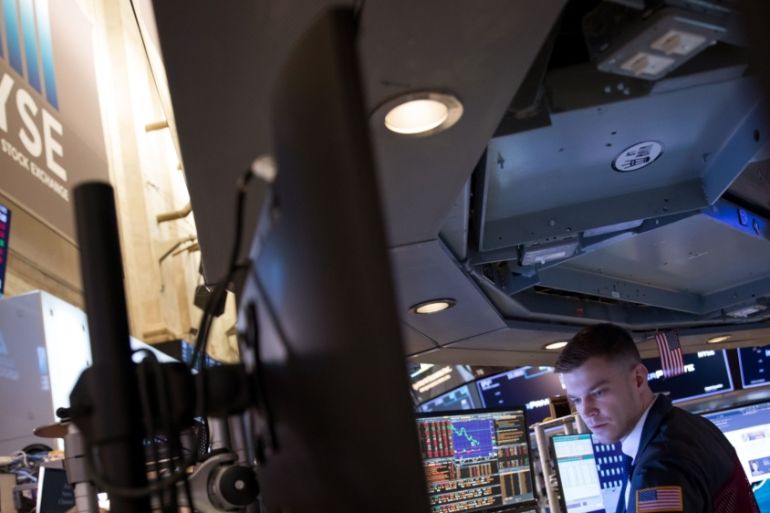US markets rise on Fed intervention
The US central bank announced another round of measures to provide as much as $2.3 trillion in extra coronavirus aid.

Details of the United States Federal Reserve’s plan to prop up a coronavirus-weakened economy has helped raise US stocks. The US’s central bank emergency measures inspired investors as US markets ended a trading week that is shortened for the religious observance of Good Friday.
The Dow Jones Industrial Average gained 1.22 percent to close at 23,719.37. The S&P 500, which is a widely used gauge for retirement and college savings accounts in the US, gained 1.45 percent. The Nasdaq Composite Index traded 0.77 percent higher.
Keep reading
list of 3 itemsMoxie move: Fed rolls out huge $2.3 trillion economic backstop
Virus sinks US labour market with 700,000 jobs lost in March
The US central bank announced another round of measures to provide as much as $2.3 trillion in extra aid. The move comes at the same time as US unemployment claims surged for the third week. With several state unemployment insurance offices deluged in recent weeks, 6.6 million workers applied for jobless benefits in the week ending April 4, the US Department of Labor said on Thursday. That followed 6.9 million jobless applications the week before, the most since the Great Recession of 2008.
“The Fed’s role is to provide as much relief and stability as we can during this period of constrained economic activity, and our actions today will help ensure that the eventual recovery is as vigorous as possible,” Federal Reserve Chairman Jerome Powell said in a statement.
The $2.3 trillion in loans seeks to backstop a number of programmes extending a lifeline to people and businesses knocked sideways by stay-at-home orders that have grounded entire sectors of the economy to a halt, thrown millions out of work and sent consumers retreating behind closed doors.
The Fed’s liquidity bazooka aims to bolster the effectiveness of the Small Business Administration’s Paycheck Protection Program, which provides loans to small businesses so that they can keep their workers on payroll.
The loans are also designed to ensure credit keeps flowing to US households as well as to small and medium-sized businesses, and help state and local governments by establishing a Municipal Liquidity Facility that will offer up to $500bn in lending.
In a hopeful sign of things to come, Anthony Fauci, director of the US National Institute of Allergy and Infectious Diseases, said US coronavirus-related deaths could total far less than earlier projections.
“I think people are in their mind, psychologically set up for really bad economic data, because we’ve intentionally shut this economy down.” Art Hogan, chief market strategist at National Securities, said. “The market is really keying on things that matter … there’s a certain amount of changing of the guard where the news that’s more important pertains to the pace of the spread of the disease … [instead of] the pace of the US economy.”
All three major averages soared more than 10 percent for the week. The S&P 500 is on pace for its best week since 2008. It rose 11.9 percent for the week to date. The Dow rose more than 12 percent. The Nasdaq ended the four-day trading week more than 10 percent higher.